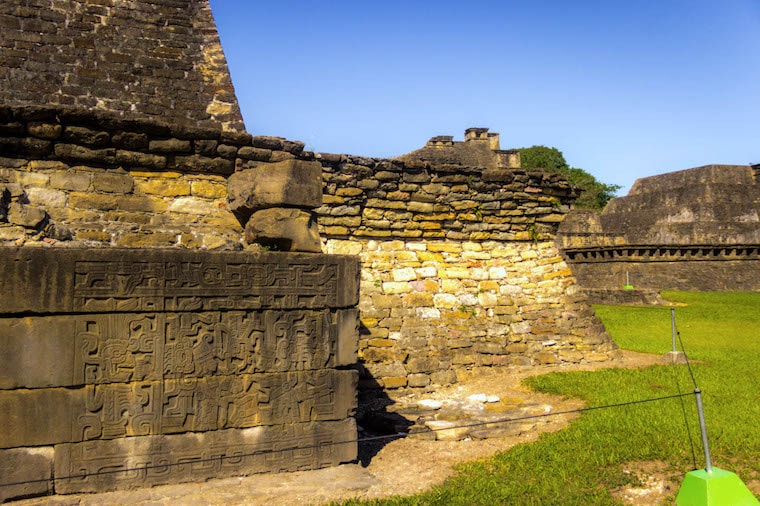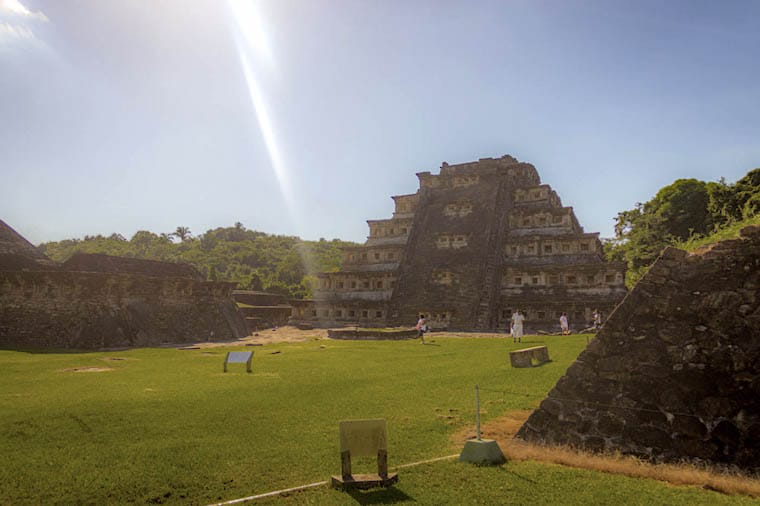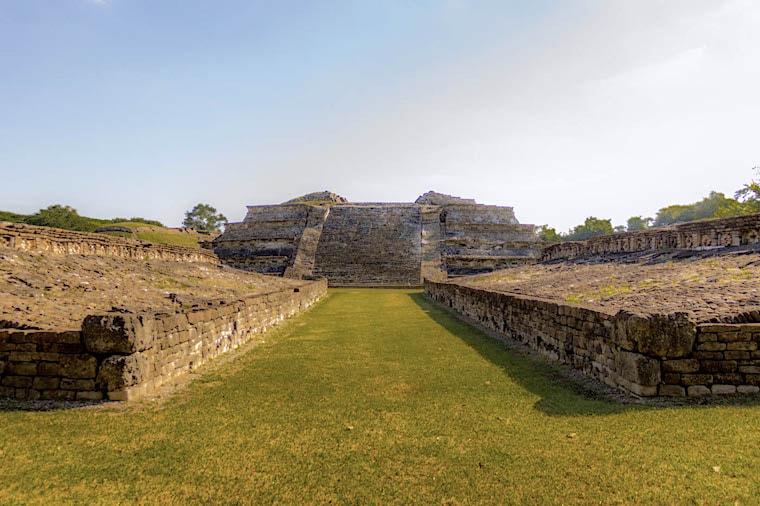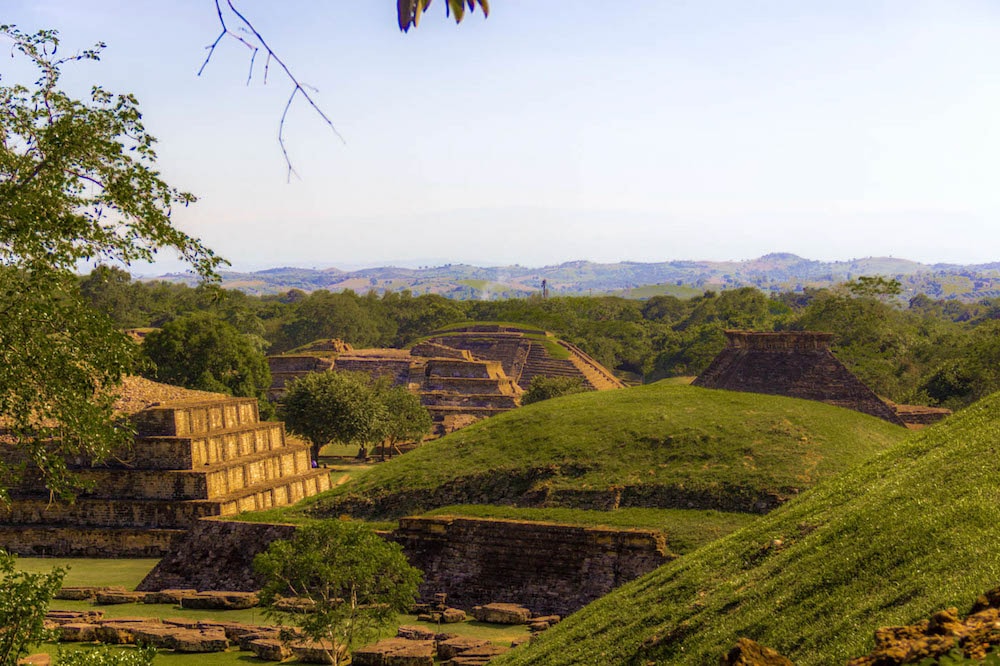Once, in Rome, I was outraged by the comment made by two Argentines about the Roman Forum: “it’s just a pile of stones”, they said. They did, however, have a point. When you don’t know the symbolism of a ruin, it’s difficult to imagine what it could represent for history or the importance that that place once had for its people. Everything turns to stone.
Without knowing anything about the Totonacs, the Tajín could be just another ancient ruin in Mexico. We can walk there without having any idea that, hundreds of years before, an entire civilization invoked the sun, rain and time from the top of those pyramids. That sacrifices took place there to honor gods that are now dead or that an emperor named 13 Coelho was its most illustrious inhabitant, due to his great political strength. Knowing all this, however, the visit gains color and the place comes to life.
When we think about the history of Mexico, it is impossible not to remember the great pre-Hispanic civilizations. The most famous ruins refer to two of these great peoples: the imposing Aztec pyramids of Teotihuacán, near Mexico City, and the beautiful Chichen Itza, the Mayan city on the Atlantic coast. That territory, however, was inhabited by dozens of other peoples, each with their own history, worldview, language and culture. The area comprising the states of Veracruz and the Puebla mountain range was dominated by the Totonacas and is still known today as Totonacapan.
In the pre-Hispanic language spoken in the region, tutu means three, and naku, heart. The Tajín formed, together with the cities of Zempoala and Xihuitzlan, the three hearts of this empire. There lived kings, rulers, wise men, doctors, priests, politicians, in short, only the highest and most intellectual class of Totonac society. Its name means city of thunder, because its ceremonial area – the part open to visitors, where the temples were located – was dedicated to the gods of rain and thunder.
For five hundred years, the Tajín remained abandoned and its glory days were forgotten under the age that took over the sacred buildings. It was only rediscovered in the 20th century and, after intense excavation and restoration work, reopened to the public in 1977. 128 temples were found within the limits of what was once the main Totonac city in the world. Of these, only 40 make up the tourist visitation circuit. Within the Tajín park there are still Totonac communities that preserve much of their language, traditions and culture. Many of them work in the archaeological area, selling water, soft drinks and typical snacks to tourists, even though they only speak rudimentary Spanish.

The rediscovery of the place also marked the revival of its religious symbolism for the Totonacs. Every March 21st, tens of thousands of people make their pilgrimage to the Tajín to celebrate the spring equinox, the date on which days and nights are the same length. The festival has had great importance in the Totonac conception of the universe since ancient times and they believe that visiting the sacred city can recharge their energy. Today, the festival is also called Cumbre Tajín, or Identity Festival, as it celebrates the traditions of the people with music, dance, presentations and conferences, all over five days.
An artistic, aesthetic and peaceful people, the Totonacs imprinted their personality on the architecture of the Tajín. The main temple there is Templo de los Nichos. At 18 meters high, the pyramid is decorated with 360 decorative niches, which represent the 360 working days of the year. The five days left in the account were the only ones they rested in the year, generally celebrated with a party – the only opportunity to get a little drunk that was socially acceptable in pre-Columbian times, with pulque and mezcal.

The Temple of Niches
The temples there are like matrioskas – those little Russian dolls –, built on top of old temples, every 52 years. This is because they believed that this was the useful life of everything in the world. Not even people turned 53: the few who reached that age had mistakes and debts forgiven and the counting of years began again, as if they were reborn. The symbolism of the number has a reason, as it is the time it takes for the solar calendar, of 360 days, and the lunar calendar, of 260, to restart their cycles at the same time.
The various sports fields spread throughout the archaeological zone can go unnoticed if you don’t know what to look for. It was in the open field that Tlachtli matches were held, a game that could last hours or days, until one of the players managed to pass the rubber ball through a narrow hoop, using their hip. The winners were granted the highest honor in that culture: joining the gods.

The Meso-American ball game field, in Tajín
How to visit the Tajín archaeological zone
How to get: You can easily visit the Tajín archaeological zone from Papantla de Olarte. The park is about 15 minutes by taxi from the city center and the trip costs 80 pesos (R$16). There are also buses leaving from Papantla or Poza Rica. It is possible to do the tour while in Veracruz, but the distance is longer. There are agencies that sell tours from Veracruz and also include a visit to Papantla.
How much does it cost: 70 pesos (R$ 14). Tickets can be purchased at the park ticket office, no need to buy in advance.
Smart Tips: Hire a guide at the entrance to the archaeological zone. They don’t charge much and give the visit a whole new meaning with the information they share. The guides at Tajín are legitimate Totonacs and have a lot to say about their culture. Outside the Tajín there is a flagpole where Papantla flyers perform daily. It’s a good opportunity to see the show if you haven’t seen it elsewhere.
Sign up for our newsletter

Sign up for our newsletter and stay up to date with exclusive news
that can transform your routine!
Warning: Undefined array key "title" in /home/storelat/public_html/wp-content/plugins/link-whisper-premium/templates/frontend/related-posts.php on line 12
Warning: Undefined array key "title_tag" in /home/storelat/public_html/wp-content/plugins/link-whisper-premium/templates/frontend/related-posts.php on line 13




